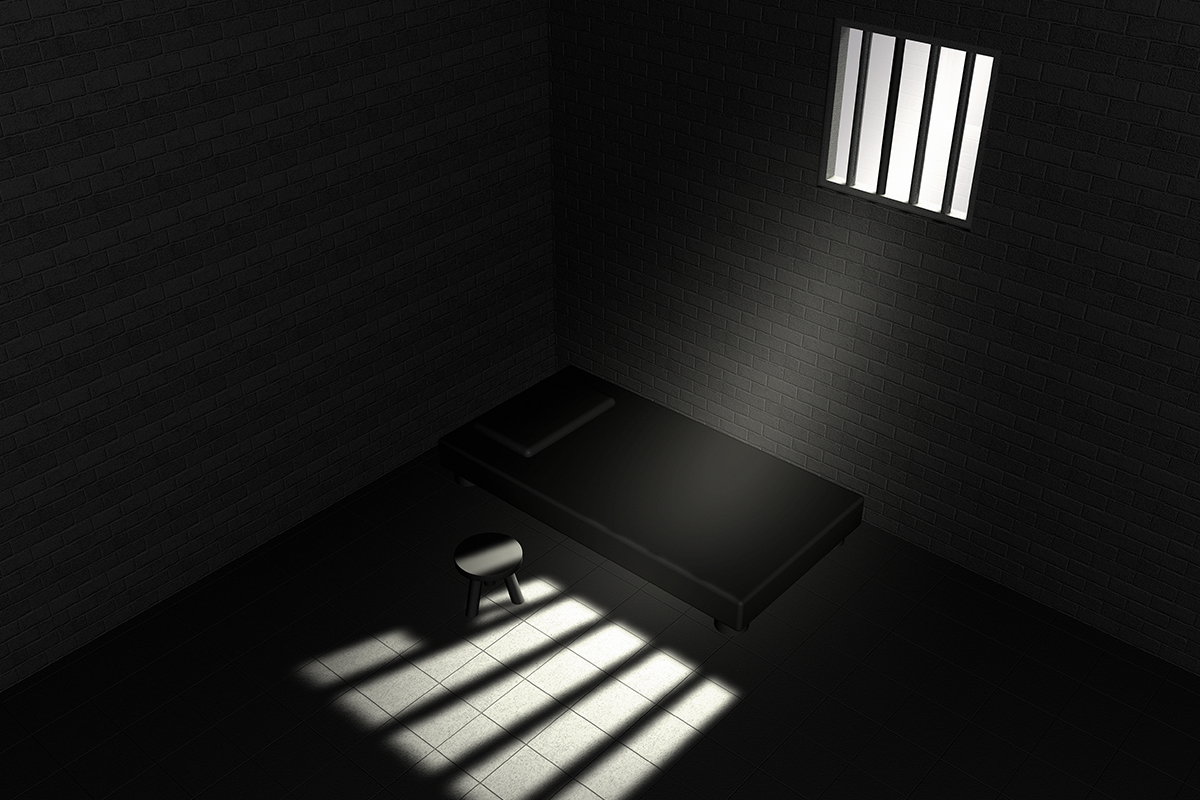Jewish views on the death penalty are as old as Judaism itself. Our Tanach (Hebrew bible) has a lot to say about it, and you can bet if the Tanach has a lot to say, the past two millennia of rabbis have even more to say about it. The Jewish interpretive tradition has created a stringent set of laws surrounding a court’s decision to execute a person with the knowledge that, ultimately, our highest commandment is to preserve life.
So what exactly does Judaism have to say about capital punishment? Let’s break it down.
Why is it important for us to talk about this now?
Early this morning, January 13, 2021, the Trump administration executed Lisa Montgomery, 52, who was sentenced to death for murdering a pregnant woman in 2004 and abducting the unborn child. She was the first woman executed on federal death row in nearly 70 years. Many have written of her mental illness and history of being abused and sexually assaulted in making the case that her execution was unjust.
This comes on the heels of the execution of Brandon Bernard on December 10, 2020 for assisting in the gang-related murder of two people in Texas when he was 18 years old. Bernard was low on the gang hierarchy and given the job of covering up any murder evidence. Yet, he and Christopher Vialva, the teenager who committed the murder, both received death sentences from a jury comprised of 11 white jurors. Bernard and Vialva were Black, and the two people murdered were a white pastor and his wife. Vialva was executed on September 24, 2020.
Montgomery, Bernard, and Vialva’s executions are all examples of President Donald J. Trump’s final push to complete federal executions before he leaves office. This represents a significant shift in the government’s approach to capital punishment; for 17 years, the federal government took a hiatus from administering the death penalty. And here we are, in the last six months of Trump’s presidency, with 10 federal executions. The Death Penalty Information Center notes that this is “the first time in the history of the United States in which the federal government carried out more civilian executions than did the states.”
Bernard’s case received enormous attention from media and high-profile observers for a number of reasons: his age at the time of the murder, his relatively small role in the murder, the racial disparities evident in his and Vialva’s jury, and his exemplary behavior while in prison. Bernard’s attorney, Robert Owen, recently discovered that the prosecutors in his case withheld evidence that demonstrated the small role he played. Although Bernard’s legal team petitioned the Supreme Court for more time to allow a court to review this evidence, the petition was denied. And although Trump had the power to intervene, he chose not to.
What do these recent cases have to do with Jewish views about the death penalty?
A favorite rallying cry for those in favor of the death penalty comes from our very own sacred text, the Torah! Death penalty proponents often lift up the words of Leviticus 24:19-20 to support their view: “A person who inflicts injury on his fellow, as he did so shall be done to him: a fracture for a fracture, an eye for an eye, a tooth for a tooth. However he injured his fellow, so shall be done to him.” In a 2014 Gallup poll, 35% of respondents said that this concept of lex talionis, “the law of retaliation” in Latin, is their number one reason to support the death penalty.
Here’s the catch for all of those Bible lovers: Torah may say “an eye for an eye,” but the Jewish rabbinic tradition has added layers (and layers… and layers) of nuance to this biblical mandate, rendering it essentially null and void in the eyes of Jewish thought and practice since the first century, CE. The rabbinic sages transform the phrase “an eye for an eye” to a complex system of damages and compensation, in which one should compensate the person whom they damaged in proportion to the damage.
Can you give me an example?
Of course. In a section of the Talmud all about this topic, the question arises: How do we know that all of this “eye for an eye” business has to do with monetary compensation? The text continues by telling us that the answer to this question should be obvious, stating that, “There may be a case where the eye of the one who caused the injury is large and the eye of the injured party is small. How can I read and literally apply the phrase ‘an eye for an eye’ in this case?”
In other words, “an eye for an eye” is logistically impossible! Instead, the Mishnah tells us, “One who injures another is liable to pay compensation for that injury due to five types of indemnity: He must pay for damage, for pain, for medical costs, for loss of livelihood, and for humiliation.” It then goes on to study how these five types of compensation must be determined in exacting detail.
If you want more light reading on the subject, the Talmudic tractate Bava Kamma is your go-to bedtime read. I promise you won’t need that melatonin (sorry, wonderful Talmud teachers!).
So, what does Jewish tradition say about the death penalty?
In the earliest layer of the rabbinic interpretive tradition, the Mishnah, the rabbis essentially eliminate the death penalty completely by building impossibly complex requirements for completing executions. The Mishnah even declares outright that a court who executes is “murderous.” You can see in the following mishnaic passage that the sages add increasing stringency to the law regarding capital punishment:
“A sanhedrin [Jewish court] that executes once in seven years, is called murderous. Rabbi Eliezer b. Azariah says: once in seventy years. Rabbi Tarfon and Rabbi Akiva say: “Had we been members of a sanhedrin, no person would ever be put to death.”
Clearly, the rabbis really don’t want anyone to carry out the death penalty. Except for Rabban Shimon ben Gamaliel, who snarked under his breath, “They would also multiply murderers in Israel.” But we all know he was a bit of a pessimist.
It’s worth noting that Jewish sources beginning with Torah and continuing to the legal codes require testimony from two live witnesses in order to impose the death penalty. Even the Torah, which seems to be pretty into retaliation (see: all the stoning!), says that one witness isn’t enough (Numbers 35:30).
In Jewish tradition, when someone dies we say baruch dayan ha-emet, “blessed is the true judge.” Behind all of the Mishnah and Talmud’s legalese is this greater theological notion that all human judgment is fallible. Traditional Judaism believes that, when each person dies, it is God’s responsibility to arbitrate what humans cannot do.
Can we circle back to 2020?
Sure. The Jewish community’s view of the death penalty has remained relatively consistent since the earliest rabbinic interpretation. In other words, all of North America’s primary Jewish movements today oppose the death penalty while recognizing the complexity of the issue in ancient Jewish texts. The Union for Reform Judaism’s Religious Action Center has spoken out against it consistently since 1959; the Conservative movement’s Committee on Jewish Law and Standards has affirmed the same position since 1960; multiple sources from Reconstructing Judaism say that capital punishment must not be practiced; and in the 1970s, Orthodox giant Rabbi Ahron Soloveichik wrote, “In my humble opinion, from a Halachik [Jewish legal] point of view, every Jew should be opposed to capital punishment.”
I think it’s fair to say that this stance holds firm all the more so in a case like Brandon Bernard’s, in which the evidence remains incomplete, the accused was so young, and in which he has demonstrated that he has gone through a process of personal teshuvah, a turn towards ethical behavior. Account after account has said that Bernard showed remorse for his actions. He even started a religious outreach program for at-risk youth. This exemplifies what Jewish tradition sees as the ideal situation: a person who is able to rehabilitate himself and thereby create a better outcome for others.
Tragically, in today’s United States, Bernard’s efforts of teshuvah could not save him from the White House’s hunger for another federal execution.
Is there any hope for the future?
While the Biden administration doesn’t have the power to abolish the death penalty (that’s in the hands of the Supreme Court or Congress), it does have the power to impede it in a number of ways.
According to political journalist Andrew Cohen, Biden “can empty federal death row in Terre Haute, Indiana, by commuting to life-without-parole terms the death sentences of the 50 or so people left on it. He can direct the Justice Department to instruct each and every U.S. attorney around the country not to pursue capital charges for federal crimes. He can order the completion of a death penalty study disappointingly left unfinished during the Obama administration.” Only time will tell whether Biden is willing to take such controversial actions.
Perhaps the new administration can take some hints from their many Jewish relatives (shout-out to Doug, Cole, Emma, Hallie, Howard, Melissa… the whole mishpacha!) and heed the words of Mishnah Sanhedrin 4:5, a portion of the Mishnah that specifically speaks about the death penalty: “Anyone who destroys a life is considered by Scripture to have destroyed an entire world; and anyone who saves a life is as if he saved an entire world.”
Ken y’hi ratzon — may this be so.
TL;DR?
Jewish views on the death penalty throughout our tradition have evolved over time to ultimately assert that the preservation of life is our highest value, and that the death penalty should not be used.



